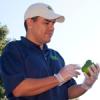We were reciently approached form a processor of ours that they use 'Biocide', a product involving peroxide & pericedic acid, applied in water, as a bath or spray @ 90ppm to sanitize incoming product. It is used for them as a 'kill step' in their attempt to have a 'log 5' reduction in risk. They say it is more high-tech and impresses FDA more than what we use as a chlorine spray over our product. We could look into adding this to our fruit water/washer tanks but I am hesitant and know nothing about this option. I have heard of others using a fog tunnel but that is a more expensive approach. When this business was inundated by the FDA b/c of a possible outbreak/recall they said it stopped the investigation in their tracks when they said every item was sprayed with this product as a kill step.
What do you all know about using this as a 'kill step'? is it necessary? Desired in the industry? Looked well upon or???
- Home
- Sponsors
- Forums
- Members ˅
- Resources ˅
- Files
- FAQ ˅
- Jobs
-
Webinars ˅
- Upcoming Food Safety Fridays
- Upcoming Hot Topics from Sponsors
- Recorded Food Safety Fridays
- Recorded Food Safety Essentials
- Recorded Hot Topics from Sponsors
- Food Safety Live 2013
- Food Safety Live 2014
- Food Safety Live 2015
- Food Safety Live 2016
- Food Safety Live 2017
- Food Safety Live 2018
- Food Safety Live 2019
- Food Safety Live 2020
- Food Safety Live 2021
- Training ˅
- Links
- Store ˅
- More






















